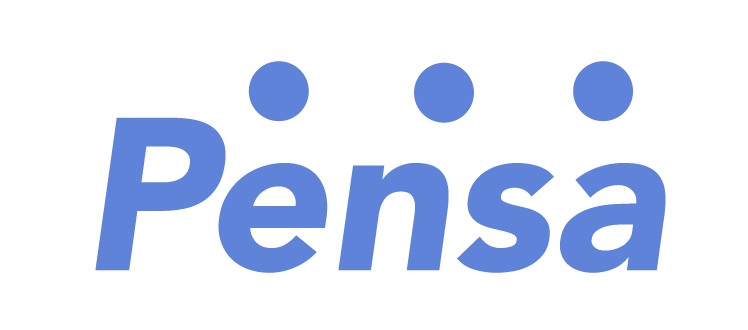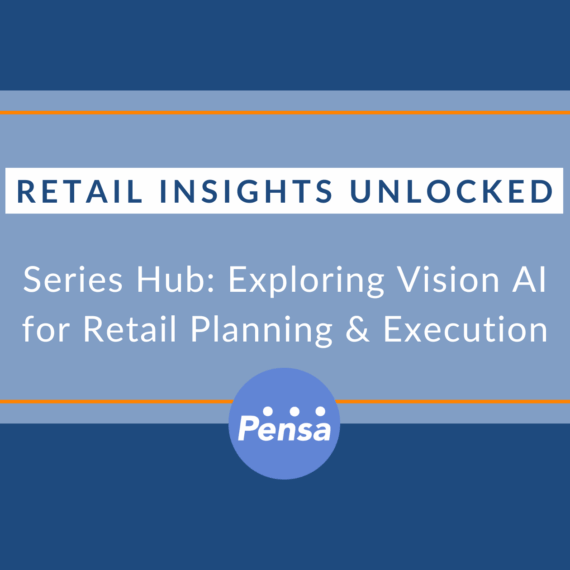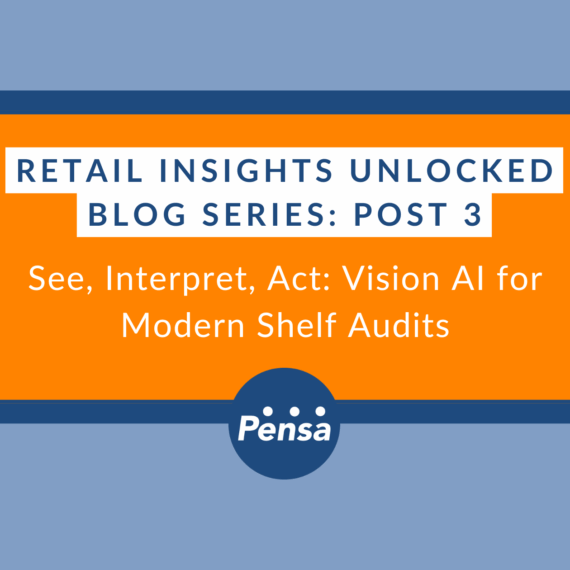Key Takeaways from the Coresight Research report Discovering Hidden Treasures in Your Supply Chain Data
When I saw Pensa Systems featured in Coresight Research’s report Discovering Hidden Treasure in Your Supply Chain Data (sponsored by NielsenIQ) I of course had to take a look. It is a robust research study with an engaging mix of survey-driven quantitative data points and qualitative industry anecdotes to help bring that data to life.
I was pleasantly surprised to find a focused and thoughtful validation of the critical business challenges Pensa was founded to address: product out of stocks and low on-shelf availability. The conversations I have daily with CPG manufacturers and retailers were unified, amplified and succinctly conveyed through Coresight’s primary research study.
Here are a few of my key takeaways from that report (available for free download here):
On-shelf availability has major business implications
“Low on-shelf availability (OSA) poses challenges” is the first insight highlighted in the report’s executive summary and rightly so. It’s a thread that continues throughout the report with the authors noting that “Low OSA, a major driver of customer dissatisfaction and lost sales, is a supply chain challenge that FMCG retailers and suppliers must not ignore”. NielsenIQ estimates in the report put the value of lost sales due to out-of-stocks over the past year at $88 billion in the US alone.
That estimate may be quite conservative as it’s based on an average out-of-stock rate of 7.4% calculated from Point of Sale (POS) data. Our view of actual on-shelf inventory conditions reflects dramatically higher out-of-stock rates, even discounting the obvious factor of supply chain disruptions these days. Too often, retailers and brands simply assume empty shelves are due to supply chain issues, when in fact they are more related to in-store execution or shelf planning and management. POS data alone as an out-of-stock metric misses many of these factors, particularly in changing times and newly forming shopping and consumption patterns.
I see this in the market every day, and then some. We’re working with leading CPG brands and retailers to apply our highly accurate, real-time shelf availability data to address myriad use cases. Whether it’s helping CPG brands with holding power, demand forecasting or portfolio rationalization, or working with retailers to improve space performance, in-stock levels or ecommerce catalog accuracy, OSA holds the key.
Legacy shelf-inventory approaches are no longer enough
Over the past few years, a number of exceptional forces have come together to accelerate change across the CPG industry. COVID shocked the CPG industry with drastically altered consumer buying patterns that created a bullwhip effect across demand and supply planning. The pandemic also accelerated grocery e-commerce and omnichannel fulfillment and with it shelf-inventory supply and demand patterns. More recently, as the report notes, the war in Ukraine and China lockdowns have made these shelf supply issues more acute.
As with other industry disruptions where new market forces manifest to overwhelm traditional models, legacy approaches to shelf-inventory are no longer sufficient to address shelf-level out of stocks in the face of rapid change. The report notes that “while 75% of retailers and consumer goods suppliers consider out-of-stock root cause analysis to be very/extremely important, only 32% or organizations that work with solution providers report that those providers possess that capability.” Just as market forces drove a seismic change in how we all watch movies at home (remember Blockbuster?), market forces are driving the need for a faster, highly accurate, continuous understanding of what’s happening on the retail shelf.
Collaboration between brands and retailers is key to mutual success
There’s a great quote in the study, “both retailers and suppliers are realizing that a siloed approach no longer works – through data collaboration, multiple parties can improve supply chain performance at the same time”. This is a very positive development for our industry, and I guess you can say it’s one positive outcome of the pandemic as 79% of those surveyed for the research indicated data exchange between retailers and suppliers has become more important than it was before COVID-19.
I’ve noticed a dramatic change with our customers. We provide a single source of truth for the retail shelf as our syndicated data signal reflects with great precision what products are where on the shelf. Pre-pandemic I had conversations allaying the fears of retailers and brands about the potential of one side or the other to “weaponize” our highly accurate shelf inventory data. These days we have brands introducing us to retailers and vice versa as both sides see the immense value in collaborating against a common OSA data set.
The report also highlights new data monetization opportunities available to retailers. This opportunity is immense and we’re working with many leading retailers to unlock the value of shelf data through monetization. Read more here about our thoughts on the data monetization opportunities the report highlights.
If you are a CPG brand or retailer focused on improving on-shelf availability, Pensa can help. We provide a continuous, real-time understanding of actual on-shelf inventory. We capture an entire grocery aisle in seconds and provide a highly accurate view of shelf inventory conditions.
The Coresight Report cites supply chain data as the hidden treasure. Time to dive in to find the gold.
Contact us to learn more.







